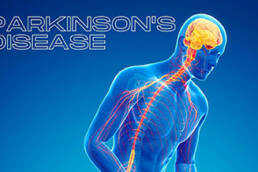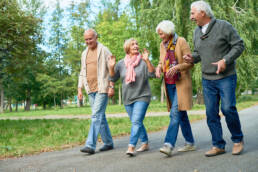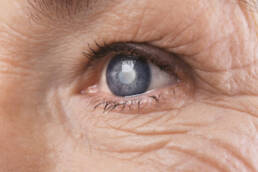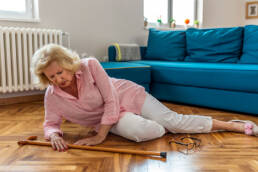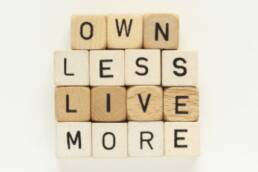Pilates is a series of slow, controlled movements that work for almost everyone.
A brief history of when Pilates started –
Pilates is named for its creator, Joseph Pilates, who developed the exercises in the 1920s. Joseph Humbertus Pilates was born in 1880 near Dusseldorf, Germany. He grew up suffering from rickets, asthma, and rheumatic fever. Like so many who have gone on to excel in the area of physical achievement and innovation, Joseph Pilates became obsessed with the frailties of his body and was determined to overcome his own afflictions.
As a teenager, he became skilled in gymnastics, skiing, and skin diving. His determination and application proved to work his body to better health. It was during World War I that many of his compatriots followed his exercise regime. Joe would remove bed springs and attach them to the walls above the patient’s beds allowing them to exercise while lying down.
Today’s reformers still retain the use of springs. Joseph Pilates expressed his own definition of fitness in 1945, as “the attainment and maintenance of a uniformly developed body with a sound mind fully capable of naturally, easily and satisfactorily performing many and varied daily tasks with spontaneous zest and pleasure.
A report from the Surgeon General of the United States, after decades of research on the effects of physical activity and health, reported the following benefits:
– It reduces the risk of dying prematurely
– It reduces the risk of dying from a heart attack
– It reduces the risk of developing diabetes
– It reduces the risk of high blood pressure
– It reduces feelings of depression and anxiety
– It aids in controlling weight
– It helps the aged become stronger and more mobile – It improves psychological well-being
Pilates works from within the body toward the exterior surface, unlike the usual gym regime which works from the outside toward the inside. With gym routines, once one stops, the results do not last and the body becomes out of shape fairly fast. With body-controlled exercises, results will not be immediate, but in the long run, the benefits will become obvious.
Yes, this is a lot of information to absorb. I have been teaching Pilates for many years, and currently teach classes at Fit for 10 in Carson City. Many of my students tell me how much better they feel they have more flexibility, more energy, and better awareness of their bodies.
Pilates is about slow, controlled movement. Learning the proper technique to do the exercises as well as learning to breathe correctly. Pilates is for all ages and abilities.
Recovering from an injury or living with a chronic condition can be more difficult at an older age and may result in loss of strength, mobility, and increased inactivity. Many seniors who participate in a Pilates exercise program have increased energy, decreased aches and pains, and greater confidence while moving. Pilates is low-impact and can be performed in non-weight-bearing positions.
4 Benefits of Practicing Pilates
Pilates can be integrated with rehabilitation from surgical procedures like hip replacement or knee surgery. Many of the exercises can be performed in reclining or sitting positions to aid those with limited mobility. Need more reasons to try Pilates? Here are four other benefits.
1. Focuses on building a strong core. It teaches control and stability in a small range of motion, graduating to a larger range of motion as individuals gain confidence.
2. Uses breathing patterns to help control each exercise, allowing you to make slow, deep inhales and exhales. This also creates a calming effect to help reduce stress.
3. Promotes increased flexibility and range of motion, which puts less pressure on joints and makes for smoother movements. Focusing on how you move, Pilates can help correct muscle imbalances.
These benefits positively work with the aging body – targeting the powerhouse for effective exercise. The powerhouse consists of the abdomen, lower back, glutes, hamstrings, and pelvic floor. Need help getting started?
Pilates Exercises for Seniors
Most of these Pilates exercises focus on the pelvis and trunk, utilizing both stability and mobility to train the body. It is recommended that beginners practice Pilates at least twice a week, although many people find three times a week to be more effective. If you’re just starting out, go slow at first and gradually increase the intensity of your workout. It is also a good idea to consult your doctor before you start a Pilates regimen.
Pilates is a functional form of fitness that aims to enhance mobility by integrating and working the four S’s: Strength, Stamina, Stretch, and Stability. Inadvertently, every Pilates exercise incorporates these working points. Whether performed on a Mat or on specialized equipment, Pilates that incorporates modern theories of exercise science and spinal rehabilitation should involve the following biomechanical principles: breathing, pelvic placement, rib cage placement, scapular movement and stabilization, and head and cervical placement.
While wonderful for those of all ages, Pilates has real benefits for seniors in particular. It’s a gentle way to exercise because it isn’t as severe on the joints as other types of exercise are. It focuses on correct form instead of going for the burn.







